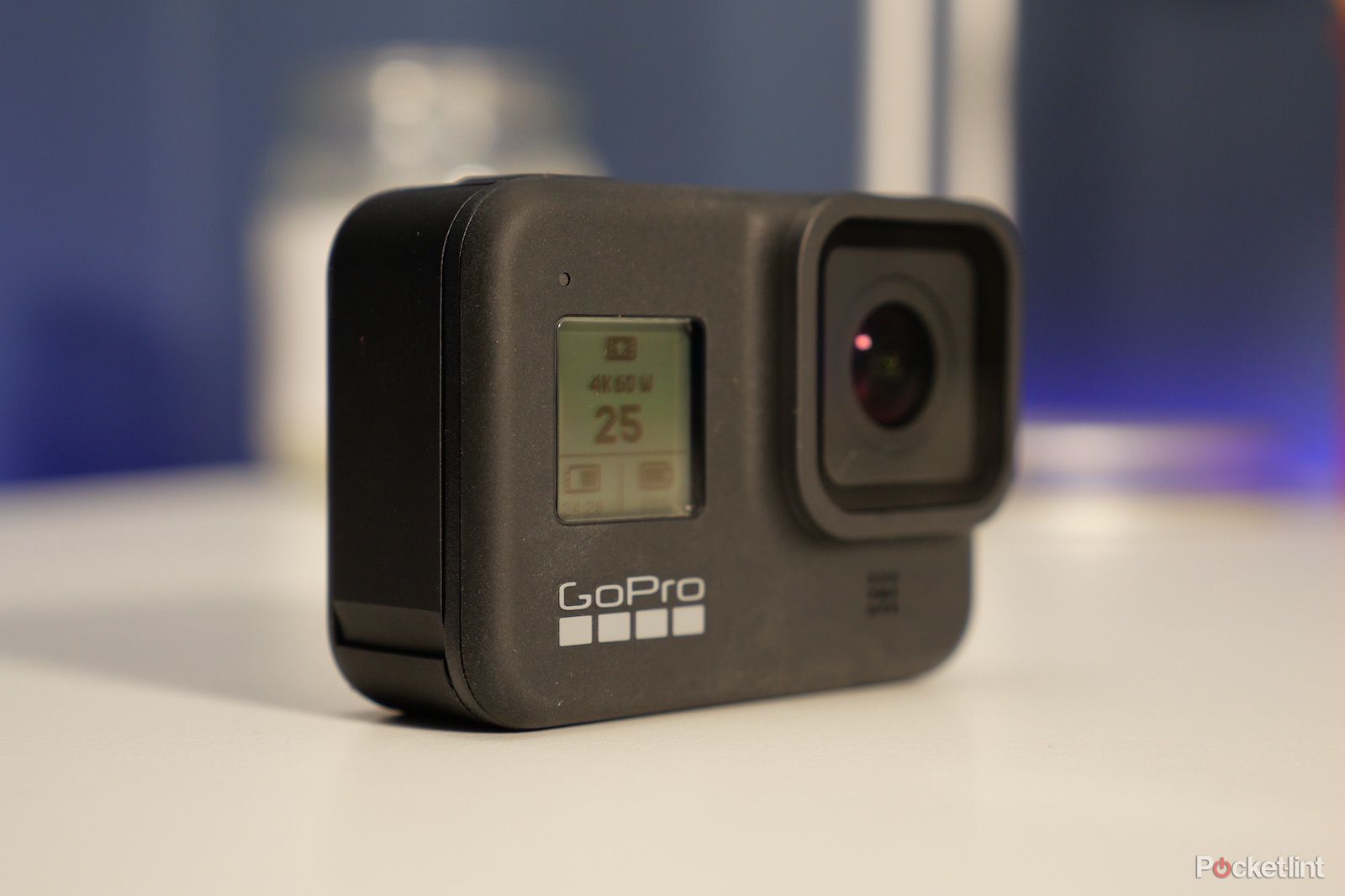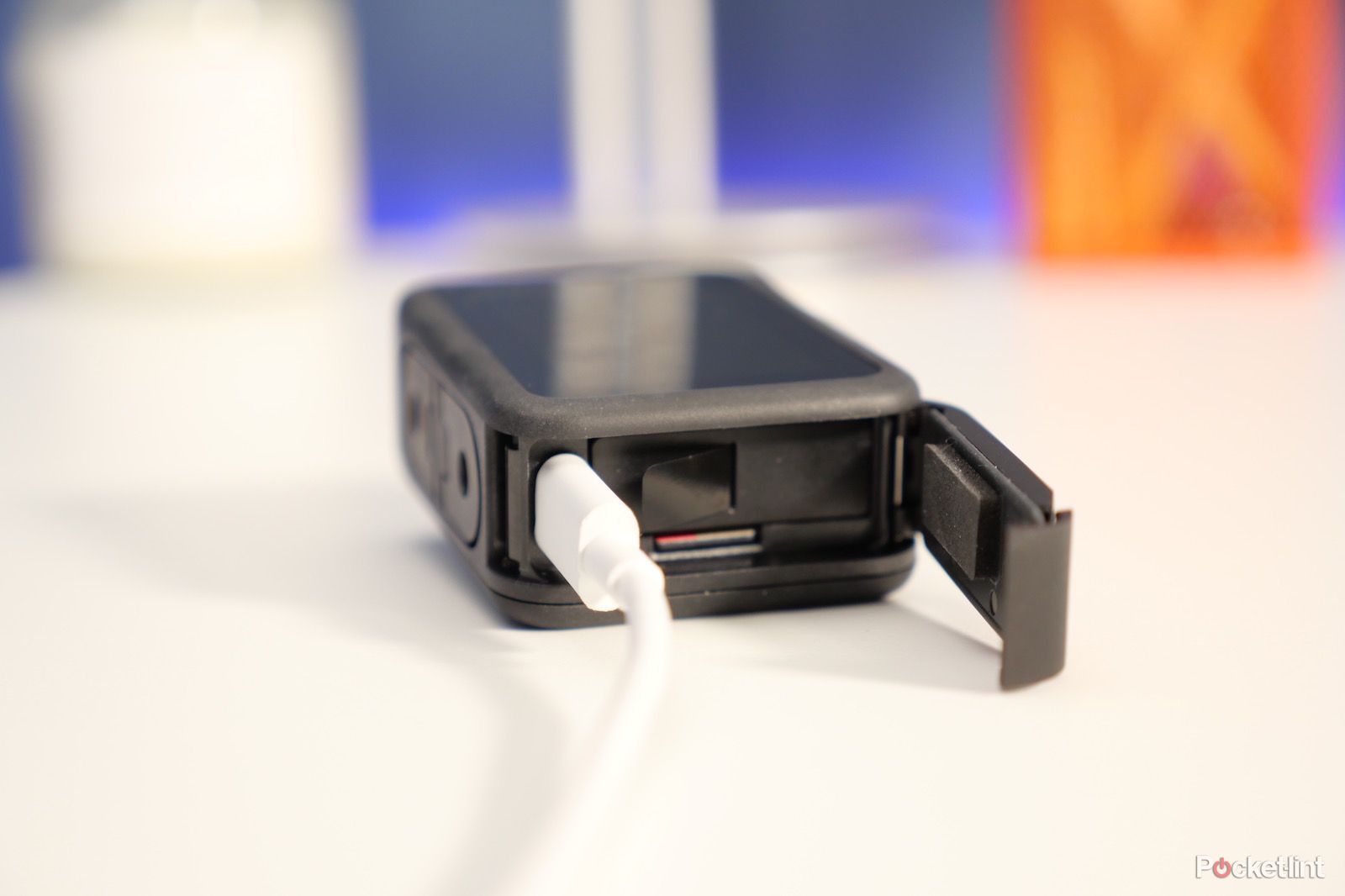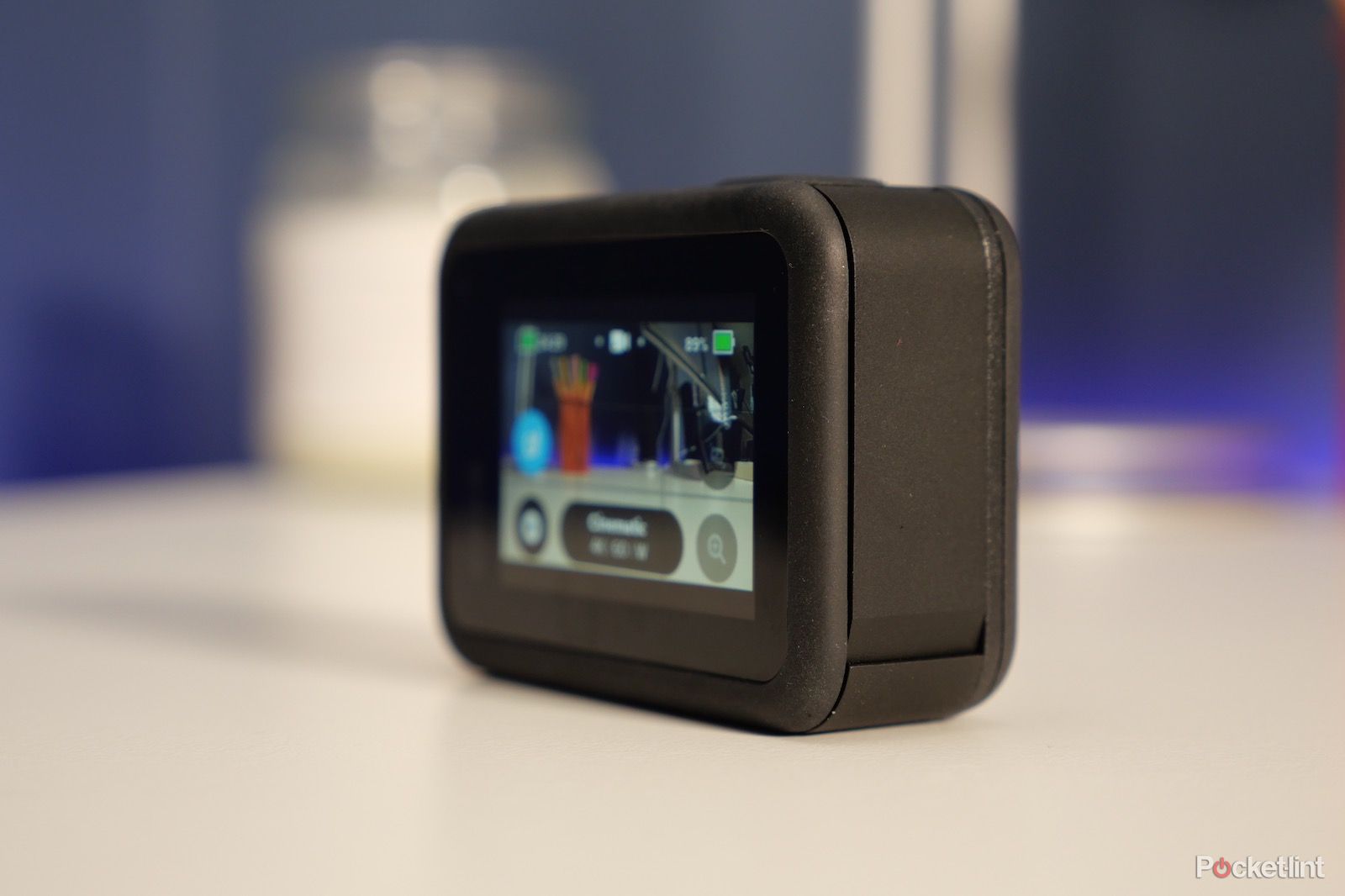The GoPro Hero 8 Black action camera builds on the performance of the Hero7 Black, offering more powerful processing, even more stable footage, built-in mounting arms and a range of mini professional mods. And all of this is built into a camera that's bigger than before and has its own mounting arms too.
While questions surrounding GoPro's future have been circling around for the past few years, the action camera company has adapted its product range, and stuck to its core task of creating powerful, easy-to-use cameras to help you capture all your wonderful outdoor exploits. And with the Hero 8 Black, it's taking it to a new level.
Our quick take
GoPro's latest action camera builds on the performance of the Hero 7 Black, offering more powerful processing, even more stable footage, built-in mounting arms, and a range of professional mods too.
For those who already have a Hero 7 Black, there's not any major reason to upgrade if you already have a bunch of mounts and accessories. That is, unless you're into vlogging and would benefit from the extra light and better sound offered by the mods.
For everyone with anything from the Hero 6 and below, however, the Hero 8 will seem like a massive step up. The way it processes the stabilisation, warps time with TimeWarp, and the results that come from it in general are a major improvement.
The addition of those built-in mounting fingers means so much less faff when it comes to switching between different handles and mounts. Combine that with how easy it is to edit and organise footage using the GoPro app, and you have one killer action camera on your hands.

GoPro Hero 8 Black - 4.5 / 5
| FOR | AGAINST |
|---|---|
|
|
GoPro HERO8 Black
Hero 8 versus Hero7: What's new?
- Bigger camera, but built-in mounting arms
- 66.3 x 48.6 x 28.4mm / 126g
- Waterproof to 10 metres
For the past few years, the Hero lineup has kept virtually the same design and shape. In fact, apart from colour, there was little change between the Hero 6 and Hero 7 series. For the Hero 8, GoPro has mixed it up a bit.
If there's any bad news, it's that the Hero 8 Black is noticeably larger than the Hero 7 Black. Place them side by side, and you'll notice there's a clear difference between the two.
Starting at the front, there are a couple of key changes: first, the GoPro logo has moved to the left in order to make space for the improved microphone system, which should improve the audio quality of your videos; second, the lens cover is non-removable, is more square, and has a thicker Gorilla Glass covering on it for better protection.
The only other change is the little LED light. Rather than be a curved strip in the top corner, there's just single pinhole-sized light to inform you when it's powering up/down and recording, just above the usual monochrome information screen.
Around the edges, the matte grey finish has been replaced by a harder, almost glittery finish. More importantly, the Power/Mode button has switched sides. It's now underneath the camera's logo on the right side, because the left is now entirely a door giving access to the battery, microSD card slot and USB Type-C port.
Unlike the tiny doors of the previous two GoPro flagships - which felt a little thin and flimsy - the new single door is thicker and made of metal, so it's a lot more durable than before. Of course it still has the the battery padding and the seal around the edges to stop water getting into the moisture-sensitive parts. Overall, we think this is a good move.
However, there is one drawback to this new door and port design: the Karma Grip won't work with it. Anyone who's bought that relatively expensive mechanical gimbal won't be able to use it with the new camera, because the ports that it needs to work have switched sides, and the camera itself is bigger and won't fit anyway.
The Hero 8's touchscreen on the back is largely the same as its predecessor, but on the underside there's a brand new addition: built-in mounting arms. This is more than likely the biggest reason for the increase in size. It means you no longer need a snap-on case or frame to mount it to any of GoPro's accessories. Just flip out the arms and screw the camera directly on to any handles and grips.
This may mean the camera is bigger than before, but it's still more compact than the Hero 7 plus its frame. That's how GoPro has pitched it as an improvement, and you'll feel the benefit of it if you use a lot of accessories, handles and mounts. Being able to mount the camera and still get easy access to the battery and memory card is a real time saver. There's no more need to remove that fiddly frame first. Just open the battery door, pop out the card/battery, and off you go. All while still mounted to its grip or stand.
If you happen to do a lot of handheld action footage, you might notice a bit of a difference in the bulk of the camera, but it's not so much bigger and heavier that it feels cumbersome. It's still a portable, easy-to-carry camera.
Easy user interface
- Updated user interface
- Touchscreen gestures
- Voice control
Since building a touchscreen into its cameras, GoPro has evolved the user interface from something which was quite fiddly and complicated into a more friendly and easy-to-use system. That evolution continues with the the Hero 8 camera; it's getting easier and easier to adjust your settings and shooting preferences.
When you first power up the camera, the default monitor view shows you the view through the lens, and has a number of easy icons on the screen. The main long pill-shaped button lets you quickly switch between some preset video settings: there's Standard, Activity, Slo-Mo and Cinematic. Each has its own preset resolution, frame rate and and virtual lens setting. If you want to customise each, you can do so easily by just tapping the pencil icon next to the option in the list.
One other cool new feature is the quick toggles on the screen. They're represented by four small circle icons on the screen, and by default include the options to quickly switch on the slow-motion function, activate the HyperSmooth Boost (more on that later), zoom and switch between the wide, linear and SuperView virtual focal lengths. Like the shooting modes, you can easily choose other functions for these quick toggles. All you have to do is press-and-hold the icon and you'll get a really long list of other options.
Dragging down from the top of the screen brings up the settings pane for activating other features, including the framing grid, switching on voice activation, screen lock and orientation lock. Swipe up from the bottom and you get to your gallery of videos and photos; the former auto-plays and you swipe left or right to move through the gallery.
Overall then, despite the screen's small size, it's easy to use and control. We were able to mess around with it, while we were sitting in a motorbike sidecar shooting video through the streets of Paris - with the camera mounted to the front of the sidecar - with very little difficulty.
As always, there's also the Mode button on the side. A quick press switches between photo, video and timelapse modes. And as you select a different shooting mode, the main shooting options and toggles on the screen switch to be appropriate for that mode. For instance, in Photo Mode, you can quickly toggle on the timer or choose between HDR, SuperPhoto, Standard or Raw stills.
Video and Photo quality
- 12MP stills with mproved HDR
- 4K video up to 60fps, 1080p up to 240fps
- Software/electronic HyperSmooth 2.0 stabilisation
Despite having largely the same sensor and image processor as the previous GoPro, it's the improvements in artificial intelligence and image algorithms that have made a huge difference to the quality of footage from the Hero 8 Black. If you thought the original HyperSmooth AI and EI powered stabilisation was good then, well, you ain't seen nothing yet.
For this camera, GoPro developed HyperSmooth2.0, a much better version of the stabilisation capabilities offered by the last action camera it launched. In daily use its capability is - and we're struggling to find the right superlative for this - stupid.
We tested it on a number of different surfaces, when walking and running, with timelapse, and in regular cinematic mode, and it blew us away. Riding through Paris in the aforementioned sidecars, with the camera mounted to the front, you could barely tell there were any bumps in the road at all (anyone who's been to Paris will know it's basically nothing but cobbles, bumps and maniacal driving). In fact, even when riding over some pretty heavy cobbles that shook the motorbike and the attached sidecar quite furiously left us with stable, smooth, clean footage.
We don't quite know how GoPro has done it, but, it's a kind of magic [insert Brian May guitar solo here].
In addition to having better stabilisation in general, there's a Boost mode which crops slightly further into the shot, allowing the footage to be even smoother. Granted, you lose some of the scene in this mode, and you can't use it in the SuperView lens/focal length, but for really extreme situations like running down a rocky scree path or riding a hard tail bike down some steps, it evens out the footage even more.
What's different about HyperSmooth 2.0 is also that you can use it in every video shooting mode, at any frame rate. Boost might be a little limited, but the default automated stabilisation is not in the slightest. So even if you want to shoot slow-motion video, HyperSmooth does its thing.
As well as that, in good daylight the camera can produce shoots with lots of vibrant colour, detail and sharpness. The same can be said of the still photographs which come with the ability to produce even better high dynamic range (HDR) shots than before, improving the localised dynamic range in testing scenarios like when you have a dark subject and harsh/bright backlight.
In lower light, or darker areas of the photos, we did see a little image noise creeping in, and when shooting in the HDR mode, there was some softening of details. With that said, many of the stills came out with lots of sharpness. It's certainly a good enough photo shooter to capture those little moments when you just need to snap photos around the action.
Perhaps the only downside, as usual with GoPro, is battery life. These powerful little cameras can't go forever, even with the newer and larger battery. We almost drained it after an hour or two of mixed use, shooting video, timelapse and stills. If you're an avid GoPro user, you won't need telling that a second (and possibly third) battery is a necessity - but at least they're easy to switch out in double-quick time now (unless, er, you're underwater or flying a byplane in loop-da-loops or something).
GoPro HERO8 Black
To recap
GoPro's latest action camera builds on the performance of the Hero 7 Black, offering more powerful processing, even more stable footage, built in mounting arms and a range of professional mods.


